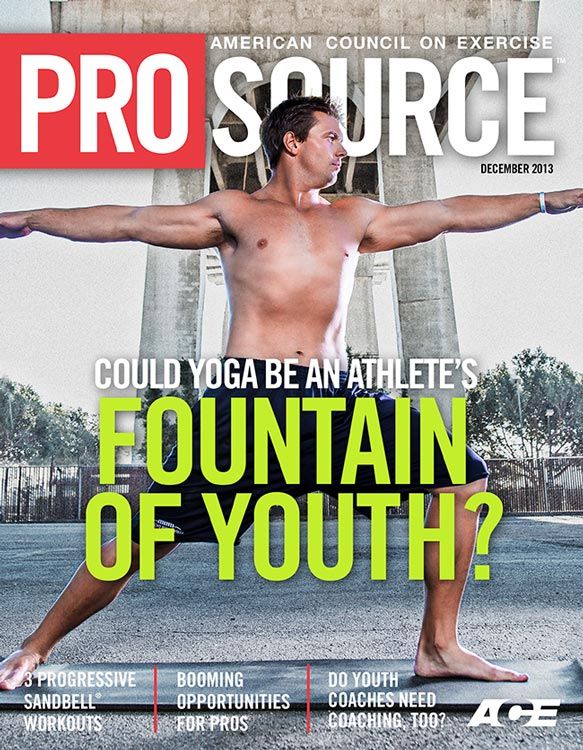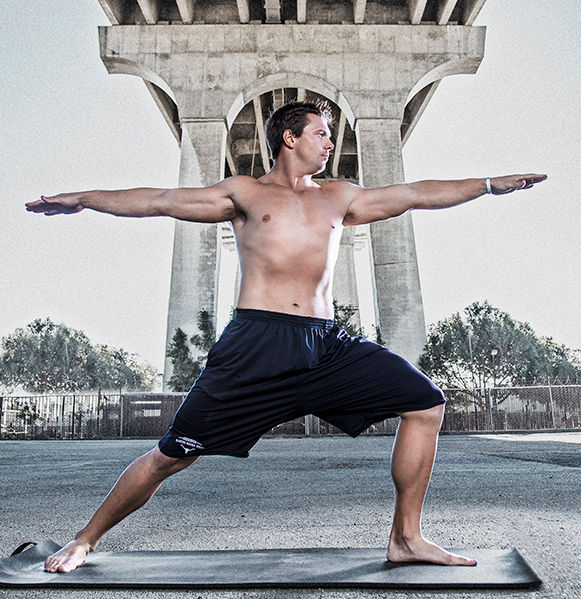
What do basketball superstar LeBron James, tennis champion Andy Murray and all the NFL players of the Seattle Seahawks have in common?
They all recover from their elite workouts with the same ancient technique: yoga.
Now fitness clients-turned-yoga-participants are following in their footsteps. Many say they also recuperate faster and feel better when incorporating this popular mind-body discipline into their exercise planning, especially as they approach and pass through middle age. Some even speculate that yoga could also be the key to avoiding those typical aches and pains commonly associated with aging, even among those who have remained active and fit all their lives.
Here’s what you need to know to help your clients do the same.
Recovery Defined
In fitness terms, recovery refers to the physical adaptations that take place in the hours or days between challenging workouts. Also called rest days, these recuperative periods allow your client’s body to physically adapt to the work he or she has done.
Without muscular downtime, you can’t get fitter. Yet today’s exercise enthusiast is bombarded with an increasing frequency of super-high-intensity exercise options: think CrossFit, P90X, Insanity and an array of HIIT- and Tabata-inspired boot camp classes at the gym.
So what’s a good counterbalance?
Increasing numbers of both professional and amateur exercisers are turning to yoga to restore themselves between other sport and sweat sessions. Even Tony Horton’s best-selling “extreme” fitness DVD series, P90X, has an accompanying yoga program, “Yoga X.”
Here’s why.
The Benefits of Yogic Recovery
“My students often say they wish they’d found yoga earlier in their sports careers, because it helps them feel balanced and fresh and ready for their next training sessions,” reports Sage Rountree, Ph.D., author of The Athlete's Guide to Yoga (Velo Press, 2008) and an endurance sports coach specializing in athletic recovery.
Can an Athlete Become Too Flexible?
Should certain athletes avoid yoga for fear of becoming overly flexible? Our experts argue no.
“There is such a thing as hyperflexibility or hypermobility. However, yoga does not cause this condition,” says Bender Birch. “If a person were hyperflexible and a teacher wasn’t trained to see that, then yes, if the student was not made aware of her hypermobility, she might create greater instability.”
The solution is in the way the client carries out a pose. Rountree says that very flexible people should focus on integration and strength in their yoga practice, rather than expansion and flexibility.
“Yoga should develop strength to the same degree as it develops flexibility. It needs to be taught correctly,” cautions Bender Birch.
What else does this mind-body method offer?
It prepares the body to heal. “Strong physical activity stresses our body similar to the ‘fight, flight or freeze’ response of the autonomic nervous system,” says Lori Rubenstein, D.P.T., M.App.Sc., owner of Mosaic Physical Therapy in Los Angeles, Calif., and an associate director at Loyola Marymount University’s Yoga Therapy program.
“Yoga has been proven to ‘re-set’ the autonomic nervous system to a more parasympathetic (relaxed) state, which is what is needed for the body to heal and recover,” she explains.
It offers a sense of achievement. Serious fitness fiends may find it difficult to stop moving and just rest. Providing an active recovery option, such as yoga at an appropriate intensity, can assuage an athlete’s psychological desire to keep training yet allow the body to rebuild, says Rountree, who also teaches yoga classes in Chapel Hill, N.C.
It restores mental and psychological focus. “There is plenty to yoga beyond the physical,” says Rountree. She explains that yoga also includes non-physical techniques such as breath and meditation exercises, which can boost recovery and improve an athlete’s performance-enhancing powers of concentration.
“Yoga is not ‘just exercise,’” agrees Rubenstein. “The magic of yoga is in what we call the ‘yoga lifestyle.’ It’s how we [carry out] our lives, our thoughts, our interactions with others and with our surroundings.” Read more about the non-exercise aspects of yogic philosophy here.
To help your clients experience yoga’s recovery-related benefits, consider the following factors.
Intensity Impacts Recovery
Research indicates that active recovery (movement performed at a reduced intensity and volume of loading, relative to a normal workout) is superior to passive recovery (doing nothing). Science also tells us that exercising at a moderate heart-rate intensity (65 to 75% of maximal heart rate) is sufficient for active recovery.
Yet science also tells us that how quickly an exercise participant recovers varies greatly among individuals.
Rountree has observed this herself. “My work with team sports has taught me that not only should a yoga practice vary according to the sport and time of year, it also depends on the athlete’s position, experience and abilities.”
So if physical replenishment is the goal, the type of yoga practiced by athletes shouldn’t necessarily be “athletic yoga,” says Rountree. Instead, “the intensity of the yoga [used for recovery] must be in inverse proportion to the intensity of an athlete’s training,” she says.
Different Styles of Yoga Provide Different Benefits
Yoga can be performed in a way that applies more training stress to the body, such as vigorous vinyasa (a fast-paced, flowing style of yoga), or by using aggressive deep stretches, Rountree says. “Or, it can be done in a way that calms the nervous system and rests the body. I prefer the latter for athletes who are in serious training,” she adds.
“If someone tends to be very tight or does a lot of weightlifting I may recommend a Yin yoga class one to two times per week, as these classes focus on slow stretching with deep breathing,” says Rubenstein. “If someone has poor body awareness and needs to improve alignment for their sport I may recommend Iyengar classes, as they focus on alignment and typically offer a good balance of strength and stretching.”
Sample Recovery Poses
Having your clients do some stretches after you finish a workout can capitalize on their muscles being warm and can give them a jumpstart on recovery, says Rountree. Here are some starter poses for yoga-based restoration (hold each pose for five to 10 deep breaths, around 20 to 40 seconds):
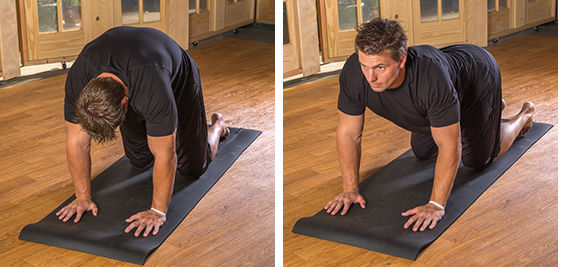
Cat/cow pose with sideways movement (variation of marjariasana/bitilasana) loosens the spine and helps students connect to their breath, says Rountree.
How? Start on all fours, with wrists under shoulders and knees under hips. Gently flex (on the exhale) and extend (on the inhale) entire spine, with a slow “wag” of the “tail.” Relax the shoulders away from the ears throughout the movement.
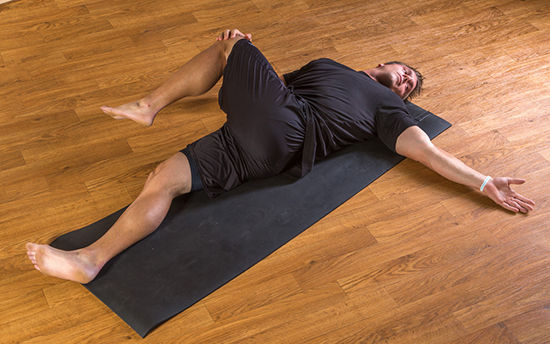
Supine spinal twist (jathara parivartanasana) twists the spine and stretches hips and shoulders, says Rountree.
How? From a supine position, drop the knees to one side, reach the opposite arm away from center and breathe deeply into the midsection.
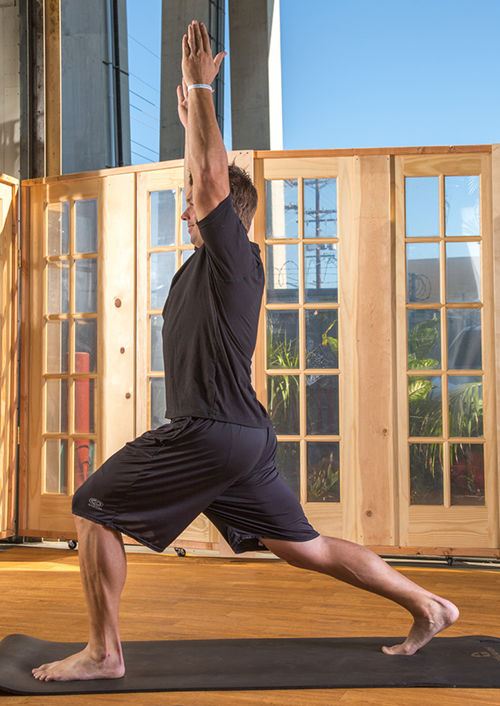
Crescent pose (anjaneyasana) stretches the quadriceps and hip flexors and improves balance.
How? Stand as if in a lunge, with the spine lengthened, arms overhead and hips facing forward. Avoid arching the low back excessively and relax the shoulders away from the ears. To reduce the intensity, touch the back knee to the ground, adds Rubenstein.
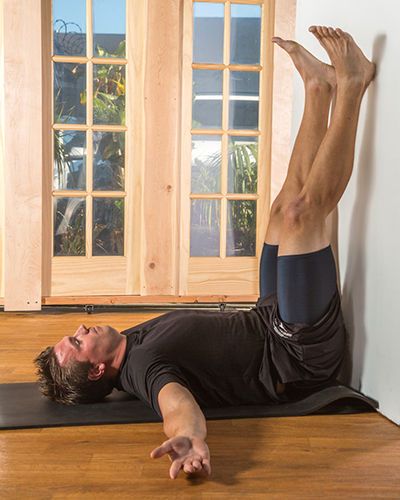
Legs-up-the-wall-pose (viparita karani) soothes the nervous system and offers a light hamstring and chest stretch, explains Rountree.
How? Lie supine with the gluteals pressed up against a wall. Extend the backs of the legs comfortably against the wall. Open arms to the sides and breathe deeply into the bottom of the lungs.
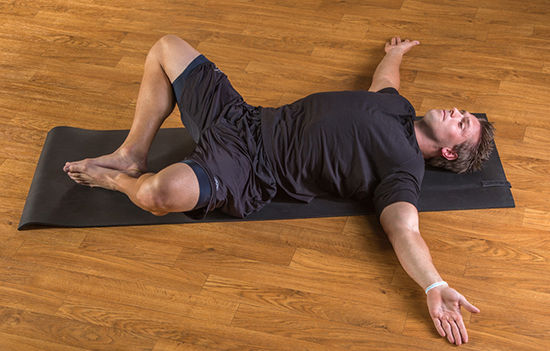
Reclining cobblers pose (supta baddha konasana) helps release the lower back, groin, hips, chest and adductors, notes Rubenstein.
How? Lie supine, with the soles of the feet flat on the floor. Slowly drop the knees open to the sides, soles of feet touching.
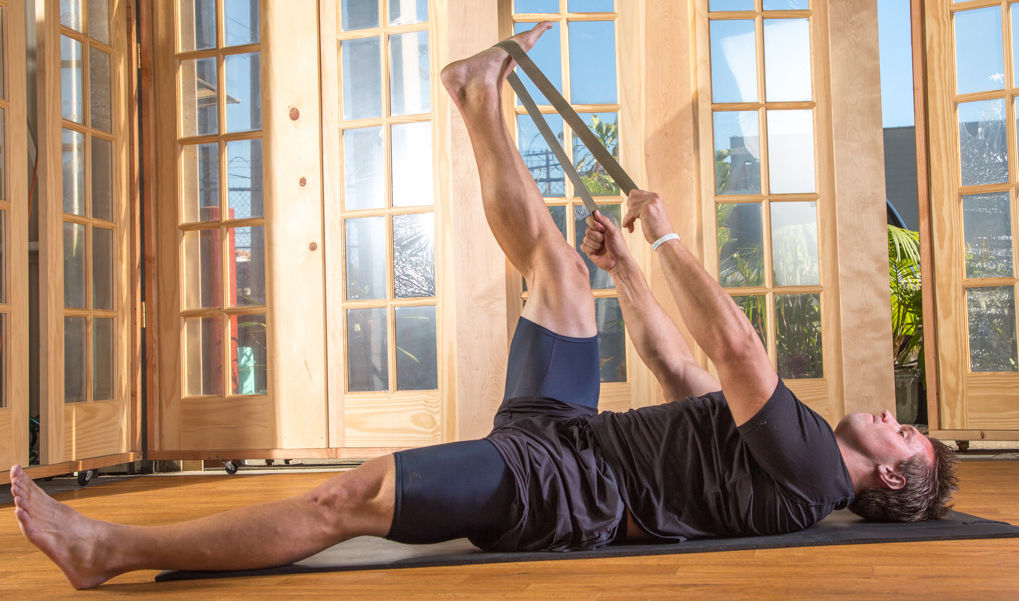
Supine big toe pose (supta padangustasana) helps lengthen hamstrings, says Rubenstein.
How? Lie supine and loop a yoga strap or towel under the sole of the right foot and extend the leg upward until it’s perpendicular to the floor. Press the lower leg into the floor, and broaden the collarbones. Repeat on the other side. For an extra challenge, instead of using the strap, hook the first two fingers under the right big toe (advanced practitioners only).

Pigeon pose (eka pada rajakapotasana I) deeply opens the hips and groin.
How? From an all-fours position, slide the right leg forward and the right knee to the back of the right wrist. Flex the right foot and extend the left leg straight back with a slight inward rotation and lengthen spine. Lean forward onto the arms to modify. Repeat on the opposite side. Note: This pose may not be suitable for exercise novices. And it is not appropriate for clients with knee problems, cautions Rubenstein. (This article offers an in-depth discussion of knee positioning in this pose.)
Safety Concerns
The success of any yogic recovery plan depends on correct execution and technique, cautions Beryl Bender Birch, author of the influential classic, Power Yoga. Her tips?
Teach carefully. “It’s important [that instructors know] how to teach correct alignment” rather than simply expect the client to know how to execute each pose correctly, says Bender Birch, who also served as the wellness director of the New York Road Runners Club in New York city from 1980–2002.
Be cautious with athletes. Although it’s initially counterintuitive, it’s your fittest clients that probably need a gentler approach. Why? “Athletes are tight—training makes you tight,” Bender Birch says. And if an athlete doesn’t start out slowly in a yoga program, he or she is more likely to become injured than someone who is not as fit and/or tight to begin with.
Finally, for best recovery results, don’t just dabble in this popular mind-body technique, says Bender Birch. “The idea that one or two or three poses will solve a problem is [counter] to what yoga is all about,” she notes. Instead, consider referring clients to classes taught by a qualified yoga specialist. This way, the recovery poses you present in fitness sessions will be that much more powerful.





 by
by 